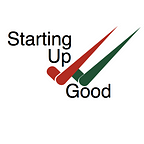Executive Summary: 2016 Global Sustainable Investment Review
Released earlier in 2017, the biennial report from the Global Sustainable Investment Alliance summarizes the state of the field at the start of 2016
The 2016 Global Sustainable Investment Review was released in March 2017, compiling the results of regional market studies from early 2016 by the Global Sustainable Investment Alliance and Japan Sustainable Investment Forum. The production of the report was led by the US SIF: The Forum for Sustainable and Responsible Investment, with financial support from Bloomberg LP.
The Review captures the state of sustainable investment at the start of 2016. The GSIA divides sustainable investments into different activities and strategies, and their definitions of sustainable investment terms are considered a global standard of classification:
- Negative/exclusionary screening, defined as “the exclusion from a fund or portfolio of certain sectors, companies or practices based on specific ESG criteria”;
- Positive/best-in-class screening, defined as “investment in sectors, companies or projects selected for positive ESG performance relative to industry peers”;
- Norms-based screening, defined as “screening of investments against minimum standards of business practice based on international norms”;
- Integration of ESG factors, defined as “the systematic and explicit inclusion by investment managers of environmental, social and governance factors into financial analysis”;
- Sustainability themed investing, defined as “investment in themes or assets specifically related to sustainability (for example clean energy, green technology or sustainable agriculture)”;
- Impact/community investing, defined as “targeted investments, typically made in private markets, aimed at solving social or environmental problems, and including community investing, where capital is specifically directed to traditionally underserved individuals or communities, as well as financing that is provided to businesses with a clear social or environmental purpose”; and
- Corporate engagement and shareholder action, defined as “the use of shareholder power to influence corporate behavior, including through direct corporate engagement (i.e., communicating with senior management and/or boards of companies), filing or co-filing shareholder proposals, and proxy voting that is guided by comprehensive ESG guidelines.”
In summary, global sustainable investment assets have continued to increase, yet not as strongly as in years past. At the start of 2016, total global sustainable investment comprised of $22.89 trillion of assets “professionally managed under responsible investment strategies”, growing from $18.28 trillion in 2014 (a 25% increase). The greatest rise in SRI assets relative to total professionally manages assets was seen regionally in Australia and New Zealand.
Negative/exclusionary screening is the largest sustainable investment strategy globally, affecting $15.02 trillion in assets. Green finance, including climate-aligned bonds, has also grown in popularity due to climate concerns.
The Review continues to go into depth by region and SRI Strategy, with sections dedicated to the trends in sustainable investing in Latin America and investing for impact in Africa. It concludes that sustainable investing now represents a significant share of the market in Europe, Australia, and the US and Canada. We encourage reading through the entire report; clocking in at a relatively short 31 pages, it’s worth the time.
